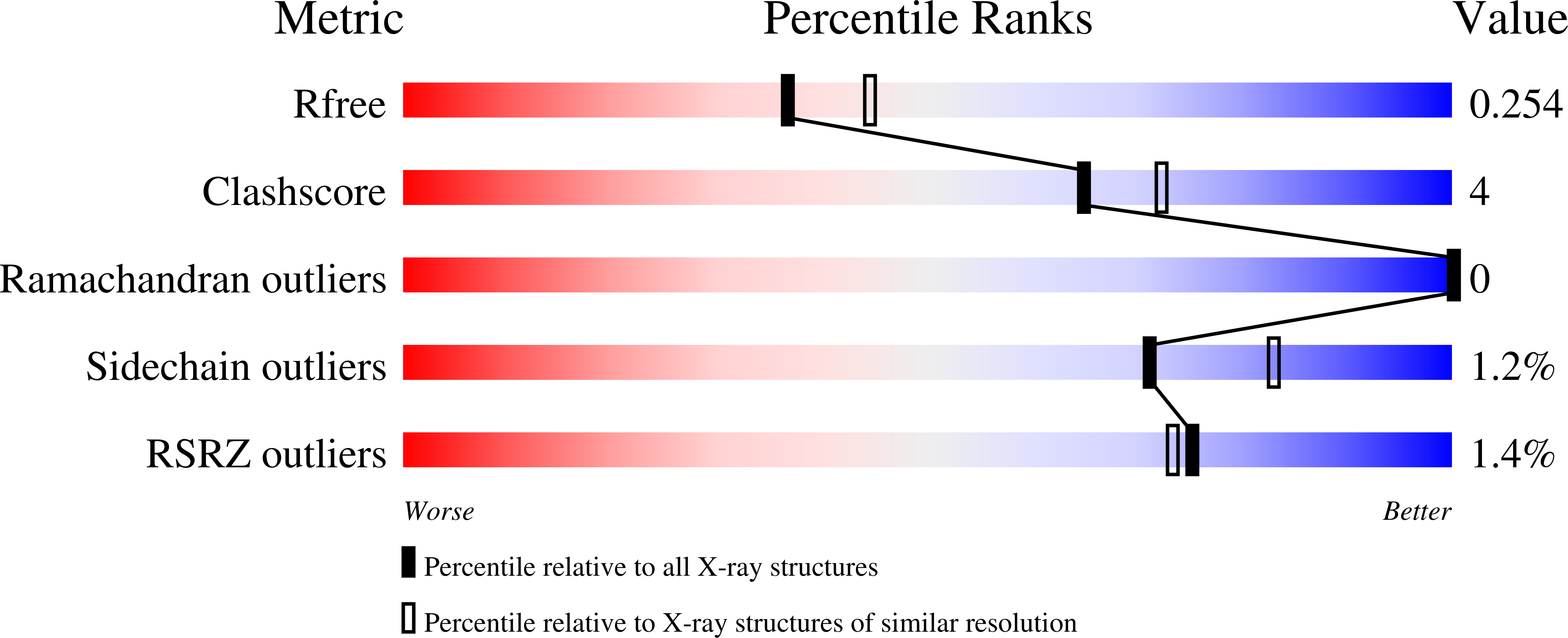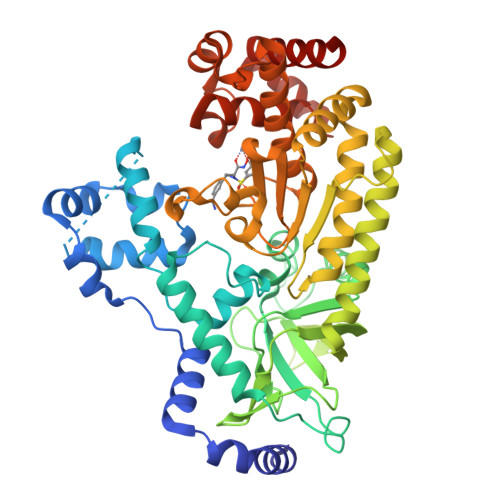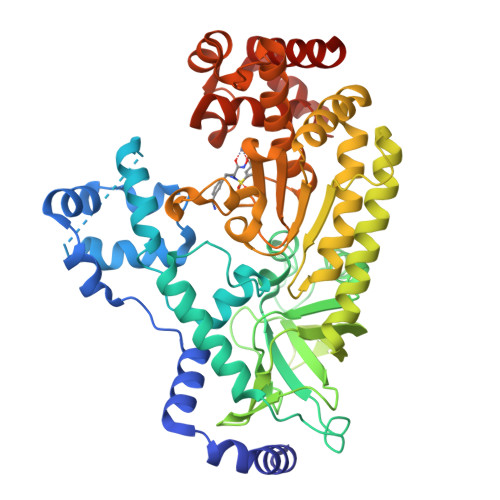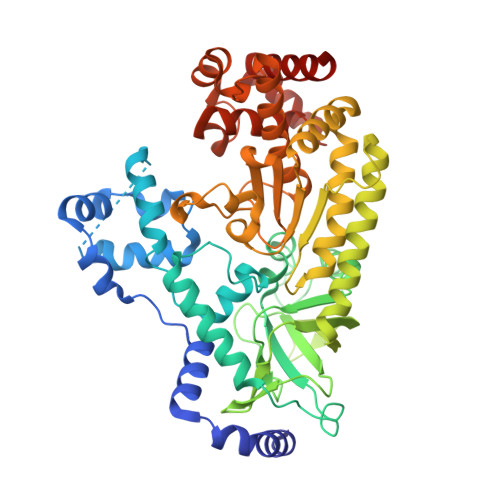Probing the S2' Subsite of the Anthrax Toxin Lethal Factor Using Novel N-Alkylated Hydroxamates.
Kurbanov, E.K., Chiu, T.L., Solberg, J., Francis, S., Maize, K.M., Fernandez, J., Johnson, R.L., Hawkinson, J.E., Walters, M.A., Finzel, B.C., Amin, E.A.(2015) J Med Chem 58: 8723-8733
- PubMed: 26492514
- DOI: https://doi.org/10.1021/acs.jmedchem.5b01446
- Primary Citation of Related Structures:
4WF6, 5D1S, 5D1T, 5D1U - PubMed Abstract:
The lethal factor (LF) enzyme secreted by Bacillus anthracis is a zinc hydrolase that is chiefly responsible for anthrax-related cell death. Although many studies of the design of small molecule LF inhibitors have been conducted, no LF inhibitor is yet available as a therapeutic agent. Inhibitors with considerable chemical diversity have been developed and investigated; however, the LF S2' subsite has not yet been systematically explored as a potential target for lead optimization. Here we present synthesis, experimental evaluation, modeling, and structural biology for a novel series of sulfonamide hydroxamate LF inhibitor analogues specifically designed to extend into, and probe chemical preferences of, this S2' subsite. We discovered that this region accommodates a wide variety of chemical functionalities and that a broad selection of ligand structural modifications directed to this area can be incorporated without significant deleterious alterations in biological activity. We also identified key residues in this subsite that can potentially be targeted to improve inhibitor binding.
Organizational Affiliation:
Department of Medicinal Chemistry, University of Minnesota , Minneapolis, Minnesota 55414, United States.


















